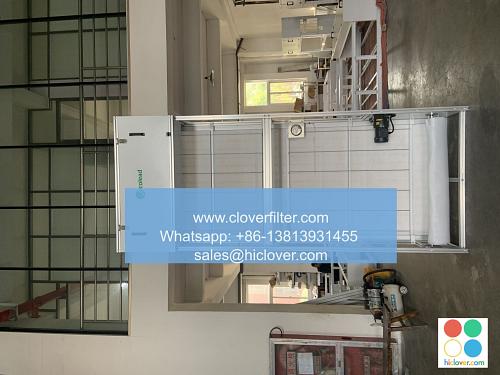From Competition to Collaboration: The Evolution of Air Filter Alliances

The air filter industry has undergone a significant transformation in recent years, shifting from a competitive landscape to a collaborative one. This evolution has been driven by the growing recognition of the importance of indoor air quality and the need for innovative solutions to address the complex challenges associated with it. In this article, we will explore the evolution of air filter alliances and highlight various application areas where collaboration has led to significant advancements.
Introduction to Air Filter Alliances
Air filter alliances refer to the partnerships and collaborations between different companies, organizations, and stakeholders in the air filter industry. These alliances aim to combine resources, expertise, and knowledge to develop innovative air filter solutions that can effectively address the growing concerns related to indoor air quality. The primary goal of these alliances is to create high-performance air filters that can capture a wide range of pollutants, including particulate matter, gases, and vapors, and improve the overall health and well-being of occupants in various settings.
Early Days of Competition
In the early days of the air filter industry, companies competed fiercely to develop and market their own air filter products. This competitive landscape led to a proliferation of different air filter technologies, each with its own strengths and weaknesses. However, this competition also resulted in a fragmented market, with multiple companies offering similar products with varying levels of quality and performance. The lack of standardization and interoperability between different air filter systems and products created significant challenges for consumers, who often found it difficult to navigate the complex landscape and make informed decisions.
Shift towards Collaboration
In recent years, the air filter industry has witnessed a significant shift towards collaboration. Companies have begun to recognize the benefits of working together to develop innovative air filter solutions that can address the complex challenges associated with indoor air quality. This shift has been driven by the growing recognition of the importance of indoor air quality and the need for high-performance air filters that can capture a wide range of pollutants. Collaborative efforts have led to the development of new air filter technologies, such as nanofiber air filters, activated carbon air filters, and UV-C air purifiers, which offer improved performance, efficiency, and sustainability.
Application Areas for Air Filter Alliances
Air filter alliances have numerous application areas, including:
* Commercial HVAC systems: Collaborative efforts have led to the development of high-performance air filters that can be integrated into commercial HVAC systems, improving indoor air quality and reducing energy consumption.
* Industrial air pollution control: Air filter alliances have developed innovative solutions for industrial air pollution control, including particulate matter capture and gas removal.
* Residential air purification: Collaborative efforts have led to the development of high-performance air purifiers for residential use, improving indoor air quality and reducing the risk of respiratory problems.
* Transportation air filtration: Air filter alliances have developed innovative solutions for transportation air filtration, including air filters for vehicles and air purification systems for public transportation.
Benefits of Air Filter Alliances
The evolution of air filter alliances has numerous benefits, including: : Air filter alliances have led to the development of standardized air filter systems and products, improving interoperability and making it easier for consumers to navigate the market. The evolution of air filter alliances has transformed the air filter industry from a competitive landscape to a collaborative one. By working together, companies have developed innovative air filter solutions that can effectively address the complex challenges associated with indoor air quality. As the demand for high-performance air filters continues to grow, air filter alliances will play a critical role in shaping the future of the industry and improving the health and well-being of occupants in various settings. By highlighting various application areas and emphasizing the benefits of collaboration, we can promote a better understanding of the importance of air filter alliances and their role in creating a healthier and more sustainable future. You haven’t asked a question or provided any context. Please provide more information or ask a question so I can assist you.
* Improved indoor air quality: Collaborative efforts have led to the development of high-performance air filters that can capture a wide range of pollutants, improving indoor air quality and reducing the risk of respiratory problems.
* Increased efficiency: Air filter alliances have developed innovative solutions that can improve the efficiency of air filter systems, reducing energy consumption and operating costs.
* Enhanced sustainability: Collaborative efforts have led to the development of sustainable air filter solutions, including recyclable air filters and biodegradable air filter media.
* Standardization and interoperability
Conclusion

